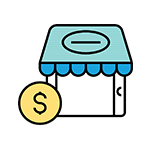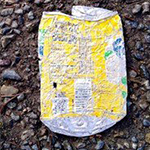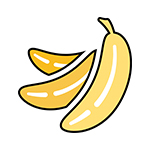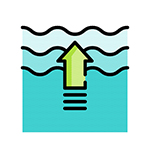
Students in our mathematics classes sometimes ask us, “When will I ever need to know this stuff?” It’s a question that has many answers depending on who has asked the question and why. My favorite answer, though, is this: “When you understand this math your life will be more interesting. Let's take a look
. . .” These stories and lesson sketches, focused in the middle and high school grades, are meant to help your students extend their view of the world a little bit by using math to make sense of experiences in daily life. Behind each of these lessons is a story. With math as a tool, the world is a more awesome project.
Author Info:
Mark Roddy is a faculty member focusing on mathematics and science education in the Master in Teaching program at Seattle University. He also works with the
Washington State Mathematics Council, where some of these ideas first appeared in “Washington
Mathematics.”
 |
Dollar Store Math
If you have taught math and you have shopped at the dollar store, how about combining the two? In this lesson students use toys from the dollar store to construct understanding of central data analysis and linear trends. Read the story behind Dollar Store Math
here. |

|
Flat Cans
Aluminum cans get thrown out and run over – flattened. And when they do they provide a vehicle for students to construct their understanding of some important aspects of volume and surface area. Read the story behind Flat Cans
here.
|
 |
Forecast Accuracy
People are apt to complain about weather forecasts and their accuracy. This is your chance to do something about them – or at least to understand their accuracy. In this lesson, students will gather data and crunch numbers to find out whether the weather forecasters
are doing their jobs. Read the story behind Forecast Accuracy
here.
|
 |
Leafy Math
Leaves are everywhere and they’re awesome. Let students gather up some of their own and use them in your classroom to develop a clearer understanding of reflection (line) symmetry. Read the story behind Leafy Math
here. |
 |
Natural Packages
Nature packages things in peels and shells and other sorts of outer wrappings that we just throw away or compost. People package things in bags and boxes and cans and so forth. Which kinds of packages are the most efficient? Learners have fun with food as they develop a clear conceptual basis of understanding of percentages. Read the story behind Natural Packages
here.
|
 |
Sunny & Shady Math
If it's hot outside how much good does it do to move to the shade? In this investigation students gather, organize and analyze temperature data from sun and shade, and then build their understanding of some standard ways to represent a set of numbers with statistics such as the median, mean and the interquartile range. Read the story behind Sunny & Shady Math
here.
|
 |
Tidal Math
Tides are phenomenal forces at work on our watery planet every day and all the time. As they tune in to tides at stations of their own choosing students will develop conceptual understanding of how a rate may be represented as the slope of a graph. Read the story behind Tidal Math
here. |
 |
Tree Trunk Math
Could Becca Swanson, current women’s deadlift record holder, lift that tree trunk? That depends on the volume and the density. In this investigation students gather some tree data and construct their understanding of the formula for the volume of a cylinder and the role that density plays in determining weight. Read the story behind Tree Trunk Math
here. |
Share your experiences using Math Sightings on social media with the hashtag #MathSightings.